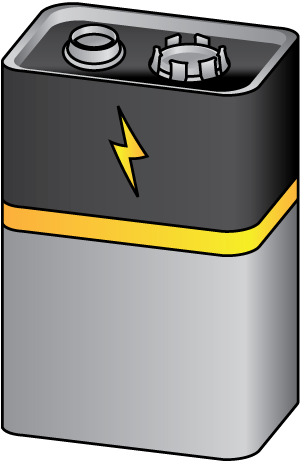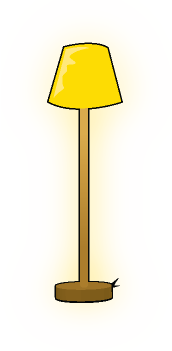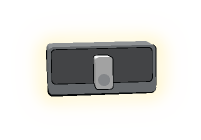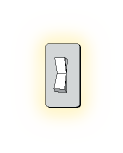Batteries use chemicals to store energy.

They are great for powering electrical appliances that need less energy and can be portable or carried around. Things like mobile phones, torches and mp3 players are all powered by battery.
There are many different shapes and sizes of batteries as they are used for many purposes.
If you look at any battery, you will notice it has two ends or terminals.
One end is marked positive (+) while the other is marked negative (-).
Electrons like to flow in the same direction, so the positive end and the negative end need to line up.

The chemicals in a battery react together to produce electrons. These collect at the negative end of the battery then flow through the chemical paste and metal rod, back to the positive end completing a circuit. This continual flow of electrons create an electric current.
The chemical reactions in the battery don’t last forever. As they begin to stop, less energy will be available and soon the battery will not be able to produce an electric current. We usually say the battery will ‘run out’ or it will ‘go flat’.
We could never meet all of our electrical energy needs using batteries alone so it is just as well there is another, more powerful source of electricity!






